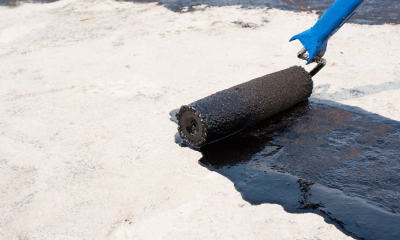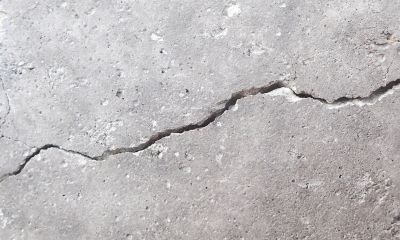A comprehensive guide to epoxy concrete repair using epoxy crack filler systems
Though concrete is one of the strongest and most trusted materials in the UK, EU, and beyond – that isn’t to say concrete-made structures will last indefinitely. Concrete on all types of structures – including buildings, bridges, tunnels, and pipes – is prone to cracking and the development of voids, gaps, and other types of surface damage. And, although cracking starts at an aesthetical level, it can worsen very quickly if the need for epoxy concrete repair is ignored – deepening further into the structure and affecting the overall strength, integrity, and performance of that structure.
In this comprehensive guide, we explain the uses and benefits of epoxy concrete repair, detailing why it is a well-used method in concrete repair.
What causes cracks in concrete structures?
Before we explore the methods of repairing cracked concrete, we will explain what causes the cracks, voids, and other damages initially [link: civilengineeringwe.com].
- Stress, excess pressure, and overloading
- High temperatures
- Chemical exposure
- Age and general wear & tear
- Poorly fitted load-bearing joints or joints fitted in the wrong place
- Penetration of moisture, leading to corrosion/expansion of steel reinforcement.
It is worth noting that there are two categories of concrete cracks – structural and non-structural. Structural cracks are hazardous to the safety of the building, bridge, pipe, or other structure, while non-structural cracks are not defective to the design or construction of a structure.
What is epoxy concrete repair?
Epoxy concrete repair is a common method used to repair cracked or damaged concrete. It uses an organic polymer made from resin and a hardener, which we call `epoxy crack filler.` The polymer within the epoxy crack filler – a clear glue-like substance – is combined with high-strength concrete before being applied to cracks, voids, and other types of concrete damage. The main ingredient to the crack filler product – the epoxy resin – is a polyepoxide, a class of reactive prepolymers and polymers. Reactive prepolymers begin curing, or `react`, to a change in environment such as moisture, water, and room temperature.
There are varying makeups of epoxy crack filler, including the use of an epoxy concrete patch with a sand aggregate. What’s more, there are different types of what we call `crack injection systems` including:
- Resin injection systems – used for structural repairs [link to product]
- Chemical systems – where the joints of your structure are water-bearing or open to chemical attack [link to product]
- Flexible systems – used on concrete crack repairs [link to product]
If you’d like to further explore which crack injection system is best suited to your structural project, we’d recommend getting in touch with a specialist contractor.
The majority of specialist contractors will agree that by using epoxy concrete repair to tackle damages early on, it is possible to save time and money if the damage should worsen further down the line.
Qualities of concrete repair epoxy
Concrete repair epoxy, or concrete epoxy for short, is made up of two powerful key components: a sticky resin and a hardener. Both of these components are whipped up to create the epoxy crack filler we know, trust, and love to use on concrete repairs!
Popular qualities of epoxy filler for concrete are listed below, but its benefits are not exhausted to this list:
- Fire-resistant (some solutions)
- High-durability
- High-strength
- Protects from deterioration
- Stain-proof
- Minimal waste following application
- Waterproof
To learn more about the epoxy crack injection systems we offer at CCUK, please visit our dedicated product page here. Please note that our concrete repair services are available in the Yorkshire and Humber region only.
How is epoxy crack filler applied?
Epoxy crack filler is a reasonable and effective standalone solution for the majority of concrete cracks. Some cracks require an additional step following crack injection (such as water-repellent epoxy or chipping and demolition beforehand), but this all depends on:
- The length of the crack
- The width of the crack
- How deep the crack is
- Whether the crack is horizontal or vertical
- The location of the crack
Also depending on the dimensions and location of the crack, the application process may be as follows:
- Filler is applied directly to the crack
OR
- Filler is injected at both ends of the crack
OR
- Filler is injected into the deepest part of the crack
OR
- Filler solution is adapted slightly to allow it to flow through the crack
To learn more about the applications of epoxy crack filler, please read our dedicated blog – 5 Uses of Epoxy Crack Injection Systems
Types of epoxy crack filler products
As a product, epoxy crack filler is available for all types of structural materials – including wood, masonry, and concrete. At CCUK, we specialise in concrete repairs – thus, our epoxy crack fillers of choice are suitable for concrete structures. Depending on which specialist contractor or construction company you use, you will hear varying opinions on which brands and products are best suited to the job.
Popular brands used by construction specialists include:
- Epoxyset
- Epoxyshield
- Mapei
- Sika
- Twistfix
It is worth noting that, although these products are available to buy online, it does not lessen the need for a qualified and trained contractor to complete the application process, following best practise, using decades of experience, and suited in full PPE.
Epoxy concrete repair companies near me
Looking for crack injection solutions in the Yorkshire and Humber region? Please get in touch with our Yorkshire-based crack injection experts today – we’re one of the UK’s leading providers based on your doorstep.
[BOOK YOUR FREE FEASIBILITY SURVEY TODAY]
Suggested reading for you
5 Uses of Epoxy Crack Injection Systems
Piccadilly Tower Manchester Project




